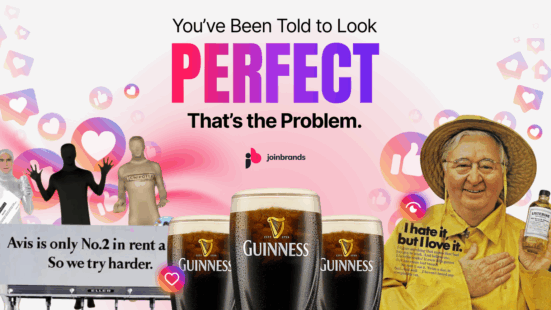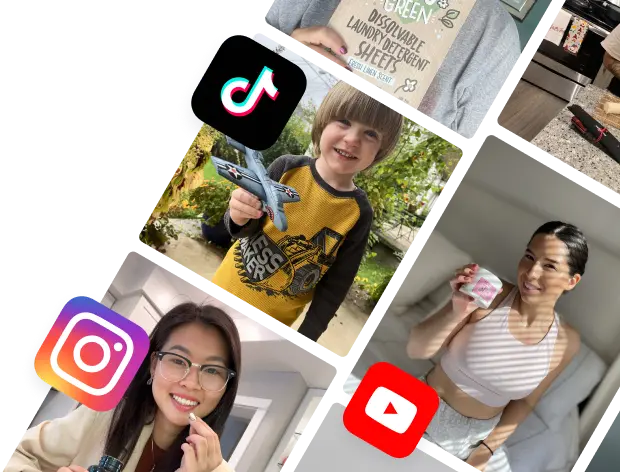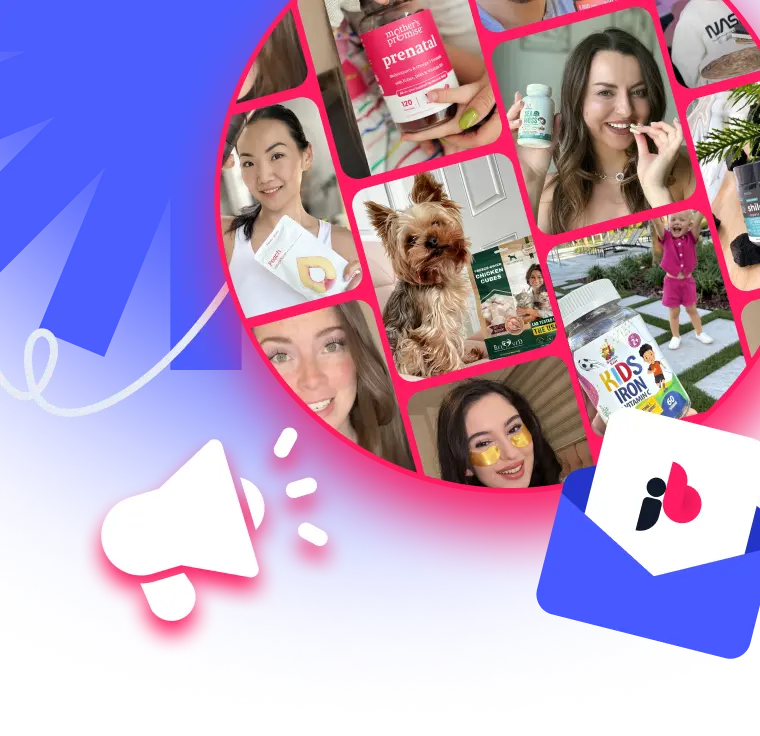 Influencer Strategy for Brands – Full Breakdown, Tips, FAQs & More
Influencer Strategy for Brands – Full Breakdown, Tips, FAQs & More
Table of Contents
The Social Media Shift: Perfection vs. Authenticity
In today’s social media world, perfection often backfires. Consumers scrolling through social feeds often tune out overly airbrushed ads or corporate jargon. Instead, they reward brands that “keep it real.” Studies show authenticity matters to an overwhelming majority of consumers – one survey found 86% say authenticity is a key factor in deciding which brands to support. On the flip side, inauthenticity is punished: about 1 in 5 people have unfollowed a brand on social media for coming off as fake or forced. In short, today’s audiences (especially younger generations) are skeptical of “too perfect” branding and crave a more human touch.
Why is authenticity so appealing? Relatable brands demonstrate transparency, humility, and even humor, signaling that they have nothing to hide. No one is perfect, and neither are brands. A bold, imperfect voice can make a company feel human and relatable, cutting through the noisy feed. In contrast, brands that pretend to be flawless often come across as disingenuous or “trying too hard.” It turns out that showing a few rough edges – or even owning up to mistakes – can make customers like you more. Two psychological phenomena help explain this: the Pratfall Effect and the Underdog Effect.
The Pratfall Effect: Why a Blunder Can Boost Likeability
Psychologist Elliot Aronson famously discovered the Pratfall Effect in the 1960s: when a highly competent person makes a harmless blunder, people often find them more likable, not less. In Aronson’s experiment, a contestant answered nearly all quiz questions correctly; afterwards the person spilled a cup of coffee on himself. Observers who saw the spill rated the contestant significantly more appealing than those who only saw the flawless performance. The little mistake humanized him.
Applied to marketing, the Pratfall Effect suggests that if a brand shows vulnerability or admits a flaw (while otherwise being competent), consumers may actually trust it more. As behavioral psychologist Richard Shotton explains, “if you admit a weakness, exhibit flaws, you become more appealing.” A dose of humility can build credibility in a world of hyperbolic ads. Rather than bragging about being “perfect,” savvy brands sometimes call attention to a shortcoming in a tongue-in-cheek way – turning it into a quirky selling point.
Classic examples include Guinness joking that its beer takes longer to pour (implying good things are worth waiting for).
Or Listerine embracing its bad taste as a sign of germ-killing strength (“it tastes awful…and it works”).
These brands found that admitting imperfections made their claims more convincing. In essence, a small pratfall can disarm consumers’ skepticism, signaling honesty and confidence.
The Underdog Effect: Cheering for “Flawsome” Underdogs
Closely related is the Underdog Effect – consumers’ tendency to root for those with disadvantages or flaws who show grit. An underdog brand story frames the company as the scrappy challenger rather than the market leader. Research confirms that such underdog narratives “arouse consumer sympathy” far more than stories of lofty dominance. In one study, participants who read an underdog brand biography (highlighting the brand’s humble origins, struggle, and determination) reported more positive brand attitudes than those who read a top-dog (market-leading) narrative. People overlook a brand’s weaknesses – like smaller size or limited resources – when they’re busy cheering on its fight for success.
Psychologically, underdog brands invite customers to become part of an “us vs. the big guys” journey. This taps into emotions and personal identity: consumers feel virtuous supporting the little guy and share in the victory when the underdog wins. A famous example is Avis’s “We’re No. 2 – We Try Harder” campaign. In the 1960s, Avis openly acknowledged its second-place status behind Hertz and promised to work harder for customers. This honest admission of weakness (being #2) combined with a determination to improve struck a chord – it turned a perceived flaw into a beloved virtue, and Avis’s market share promptly jumped.
The lesson is that when a brand embraces its underdog position or past mistakes and shows fighting spirit, consumers often respond with support and loyalty rather than judgment.
Why “Flaws and All” Builds Trust and Connection
Modern consumers have trust issues with brands – and not without reason. Public confidence in corporations is lukewarm (by some measures, barely half of consumers trust brands to begin with), so brands must earn trust through genuine behavior. Being open about faults or past missteps is one powerful way to do that. A 2022 study found 41% of consumers would return to a brand that admits its mistake and apologizes. In contrast, trying to cover up problems or projecting false perfection can erode trust permanently.
Authenticity also creates an emotional connection. When brands act “human” – cracking jokes, showing empathy, admitting “we’re not perfect” – people respond on a personal level. In short, showing your “flaws and all” proves to consumers that you’re real, and being real is the only way to earn trust in the long run.
Recent Case Studies: Brands Turning Flaws into Wins
To see how these principles play out, let’s look at several brands that recently found success by embracing authenticity, mistakes, or a self-deprecating style. These case studies – all within the last year or so – illustrate that relatability isn’t just a theory; it’s a winning strategy in practice.
Stanley: Viral Empathy and “Built for Life” Authenticity
Stanley’s president, Terence Reilly, performed a bold act of customer care – including gifting a new car – after a Stanley tumbler survived a fiery car wreck, exemplifying how authenticity and empathy can transform a viral moment into a brand triumph.
In November 2023, a TikTok user named Danielle posted a shocking video: her car had burned to a crisp…yet in the charred cup holder sat her stainless steel Stanley tumbler, fully intact with ice still inside. “It was in a fire yesterday and it still has ice in it,” she marveled, demonstrating the cup’s durability. The video exploded online, essentially becoming a “free commercial” for Stanley’s quality. Comments poured in saying things like “Stanley better cut you a check after this” – the public recognized this as a marketing opportunity gift-wrapped by fate.
Stanley’s response could have been a generic PR statement, but instead they acted human and fast. Within 24 hours, Stanley’s global president personally replied with a heartfelt video. In a TikTok duet addressed to the customer, Terence Reilly thanked her for sharing the story (“wow, what an ordeal, and we’re really glad you’re safe”), acknowledged that the incident was the “best example” of their product’s toughness, and promised to send her some new Stanley tumblers. Then he went even further: “We’d love to replace your vehicle,” he said – “we’ve never done this before and will probably never do it again”. In other words, Stanley seized this chance to pay it forward, not as a calculated ad campaign but as a genuine gesture of goodwill.
The internet went wild for this response. Comments on Stanley’s video were overwhelmingly positive, with people vowing to buy Stanley products to reward the brand’s awesomeness. In marketing terms, Stanley turned viral “UGC” (user-generated content) into an earned-media bonanza. The story was picked up by major news outlets and social platforms worldwide. In total, Stanley’s act of empathy earned an estimated 3.3 billion media impressions, drove a 220% spike in the brand’s TikTok followers, and helped deliver the best sales quarter in the company’s history (with its flagship tumbler sales up 275% year-over-year). By embracing an unexpected scenario with authenticity, Stanley not only reinforced its “built for life” product promise, but also won the hearts of consumers who now see the brand as truly caring.
The North Face: When a Grand Gesture Feels Less Genuine
Just weeks after Stanley’s win, another outdoor brand tried a similar viral stunt – but got a chillier reception. In late 2023, The North Face responded to a customer’s TikTok complaint in the most over-the-top way imaginable: by flying a new jacket to her via helicopter on a mountaintop. The saga began when a hiker in New Zealand posted a TikTok showing herself soaked through by rain while wearing a North Face “waterproof” jacket. “I’m 100% sure it’s raining…and I’m soaking wet,” she says in the video.
A few days later, North Face delivered – literally. The company’s official TikTok posted a highly produced response: a North Face employee grabs a jacket in-store, hops into a helicopter, and drops in on the mountain summit to hand the woman a new (supposedly improved) coat.
The video is cinematic and tongue-in-cheek, and it certainly got people’s attention. However, it did not resonate as positively as Stanley’s down-to-earth approach. North Face’s stunt video garnered about 4 million views – respectable, but barely one-third of the original complaint’s reach. More telling was the tone of the reaction. Many viewers were entertained but also skeptical: was this authentic care or just a flashy PR play? Even the customer herself posted a follow-up clarifying that her initial post wasn’t sponsored (she claims “I’m not an influencer, I was just a disappointed customer” and says she declined payment for the follow-up).
While the helicopter drop made headlines as a “hilarious, spectacular marketing stunt”, some in the audience got a bit of the “ick” – perceiving the whole thing as a staged advertisement piggybacking on a genuine gripe. Marketing analysts pointed out that North Face was essentially trying to follow Stanley’s playbook, i.e. demonstrate customer care in a viral way. But where Stanley’s video felt like a spontaneous act of kindness, North Face’s felt like a big-budget production (because it was). As one industry blogger noted, authentic and genuine brand responses tend to land better than obviously orchestrated “look-what-we-can-do” responses. The North Face did succeed in creating buzz, but arguably missed the emotional mark. The lesson from this contrast is instructive: audiences value sincerity over spectacle. A response to a brand “flaw” (in this case, a product failing to perform) works best when it comes off as genuinely customer-centric, not a self-congratulatory ad. In authenticity marketing, how you do it is as important as what you do.
Ram Trucks: “We Got It Wrong” – Owning Up on the Big Stage
It’s not only social media one-off moments – even big brands with big budgets are learning to embrace humility. A prime example is Ram Trucks. In an automotive twist on the pratfall effect, Ram faced a wave of customer outrage after its parent company announced plans to discontinue the beloved Hemi V-8 engine in its trucks. Loyal Ram owners were furious at losing the iconic V8, and sales started to slump as dissatisfaction grew. Rather than sticking to their decision or making excuses, Ram’s new CEO took an unusual step: he publicly apologized and reversed course. In June 2025, Ram released a bold new commercial that basically said “sorry, we messed up.”
In the ad, CEO Tim Kuniskis himself appears on screen, behind the wheel of a Ram 1500. After performing some smoky doughnuts and drifts (a nod to the Hemi’s muscle), Kuniskis speaks directly to customers: “We own it. We got it wrong. And we’re fixing it.”. He admits the company shouldn’t have tried to drop the engine and promises to keep the Hemi V-8 alive. This no-spin, no-PR-blather apology was startling in its transparency – effectively a textbook brand mea culpa. It’s worth noting that Ram’s agency had to convince the company to take this approach: the instinct in corporate culture is often to avoid admitting fault.
Early signs showed the honesty paying off. Ram customers flooded forums and social media with positive comments about the company listening and doing right by them. The transparency helped rebuild trust that could easily have been permanently lost. It also generated plenty of earned media coverage – after all, it’s not every day you see a Fortune-500 brand say “oops, we’re sorry” so bluntly. By apologizing in such a public way (and backing it up with action, by keeping the product they almost killed), Ram turned a brand pratfall into an opportunity to re-energize its community. This case underscores that competence + a flaw + a sincere fix = deeper loyalty.
Chipotle: Self-Deprecating Humor and Humanized Marketing
Not every example of “flawsome” branding involves a public mistake – some brands proactively use humor and self-mockery to appear more human and relatable day-to-day. A standout is Chipotle, the fast-casual restaurant chain, which has mastered a playful, self-deprecating social media presence. Chipotle’s marketing to Gen-Z and Millennials often involves poking fun at itself and leaning into fan memes. For instance, in October 2024 Chipotle collaborated with Spirit Halloween to create tongue-in-cheek Chipotle-themed Halloween costumes – including a “Chipotle Burrito,” a “Chipotle Delivery Bag,” and even a “Chipotle Water Cup” costume. (The “water cup” is an inside joke referencing how some cheeky customers request a free water cup and then fill it with soda – a fact Chipotle openly made fun of.) The humorous costume campaign generated a flood of user-generated content and memes, all laughing with Chipotle about its own quirks.
On TikTok, Chipotle has embraced the latest trends and even subtle brand “flaws” to engage its audience. One famous TikTok trend saw customers filming their burrito being made, since employees tended to give bigger scoops when on camera. Instead of ignoring this, Chipotle played along, creating videos dramatizing the heaping portions and joking about it. The company regularly responds to fan comments with witty, self-aware comebacks. In essence, Chipotle’s social media managers act like real people who are in on the joke of being a fast-food brand, rather than a faceless PR department. This kind of everyday authenticity – acknowledging minor flaws or funny truths – builds a likability that polished ads simply can’t match. It’s no surprise that other companies have followed suit: from Duolingo’s cheeky TikTok owl to Scrub Daddy mascot sponge that stars in hilariously awkward skits: imperfect lighting, cheesy slang, even setting other sponges on fire or even mainstream names like Ryanair, which has amassed a huge social following by roasting its own reputation (joking about uncomfortable flights and endless fees), self-deprecating humor is now a go-to strategy. These brands show that embracing the absurd and flawed aspects of their identity can actually set them apart in a cluttered media landscape.
Why Real Beats Perfect: Data & Psychology
The preference for authentic content isn’t just hype – it’s backed by research. Surveys find 69% of consumers say they trust a friend, family member or influencer over brand advertising. Only 11% prefer celebrity endorsements; far more (61%) favor “relatable personalities” as influencers. Crucially, authenticity tops the list of brand attributes shoppers seek – 39% rank it first.
User-generated content (UGC) – which is the ultimate “authentic” media – clearly outperforms polished ads. One compendium reports shoppers are 2.5× more likely to label UGC as “authentic” vs. brand content. Ads featuring genuine customers achieve roughly 4× higher click-through rates than their brand-shot counterparts, and sites with UGC see conversions jump ~10%. In short, imperfect content pays off with deeper trust and better ROI.
Academic studies make sense of this: authenticity is multi-dimensional. Researchers identify factors like expertise, originality, connectedness, transparency and integrity as the building blocks of influencer authenticity. Importantly, forced messages can kill the vibe. A Journal of Marketing study found when influencers are given creative freedom (instead of a strict script), audience engagement and trust significantly increase. In other words, audiences sniff out fakery – but they happily embrace raw, candid storytelling.
The influencer mix is also shifting. Nano‑ and micro-influencers (1K–100K followers) dominate new campaigns because their small audiences often mean real community ties, not just reach. In practice, a recommendation from a relatable micro-influencer drives more action than a TV celebrity endorsement.
In short, authenticity is the common currency of successful brand and influencer marketing. The booming influencer industry (forecast at >$24B by 2025) rewards genuine connections. Brands that encourage messiness – the bloopers, the quirky humor, the behind-the-scenes warts – will find their campaigns cutting through the noise.
Key Takeaways: How Flaws Make Brands “Flawsome”
In sum, the rise of relatable, “flawed” branding is teaching companies new ways to connect with jaded consumers. Here are the core lessons from our deep dive:
- Embrace Transparency – Even When It Hurts: Hiding mistakes is old-school. Admitting a harmless blunder or past failure can build trust, as customers see you as honest and accountable (remember, 41% will return to a brand that apologizes). Own your errors and fix them openly; your audience may love you more for it.
- Underdog Stories Inspire Loyalty: Don’t be afraid to share your humble beginnings or struggles. An underdog narrative that highlights challenges (and how you strive to overcome them) will humanize your brand and encourage customers to root for you. In a world of giant corporations, being the scrappy “No. 2 who tries harder” is often an advantage.
- Show You’re Human (Humor Helps): Ditch the corporate speak and engage with your audience in a conversational, witty tone when appropriate. Self-deprecating humor – joking about your brand’s quirks or flaws – can make your brand more relatable and likable. The key is to ensure it aligns with your identity and audience; when done right, it turns followers into fans.
- Authenticity Beats Perfection: Whether responding to a viral mishap or creating a marketing campaign, keep it real and heartfelt. Consumers have sharp BS detectors. A genuine gesture (like Stanley’s sincere customer care or Ram’s frank apology) will outperform a scripted stunt in earning goodwill. Be consistent too – authenticity is a long game, not a one-off.
- Flawsome Brands Win Hearts (and Business): Ultimately, these case studies prove that being “flawsome” – awesome because of your flaws – is a winning formula. Imperfection, handled with grace or humor, signals authenticity. And authenticity creates an emotional bond that drives word-of-mouth, virality, and even sales. The boldest brands today “cut through the nonsense” by staying truthful and “not pretending to be perfect”.
- Empower influencers as humans. Hire creators who really use and love your product. Let them speak freely about it (good and bad). Genuine passion carries more weight than a polished sales pitch.
- Embrace micro and niche voices. Identify influencers whose lives mirror your audience’s.. Platforms like JoinBrands can help match brands with micro/nano-influencers based on values and interests. These “regular” creators often have higher engagement and trust.
Modern consumers don’t expect brands to be infallible saints. They do expect honesty, respect, and a bit of real personality. From viral TikToks to nationwide ad campaigns, the brands going from zero to viral are those willing to say, “Hey, we’re human too” – flaws and all. And ironically, by showing a crack in the armor, these brands are building stronger relationships than any “perfect” image ever could.
Real recognizes real.
Here’s the truth:
People don’t connect with logos. They connect with people.
With the awkward pauses. The weird quirks. The “oops, my bad.”
With the creator who spills their coffee mid-ad and keeps rolling.
With the brand that says, “We tried something. It didn’t work. But here’s what we learned.”
That’s the kind of stuff we remember – because it’s honest. It’s alive.
And in a world of perfect grids and polished scripts, honesty feels like a breath of fresh air.
That’s what JoinBrands is built on.
Not perfection. Not polish.
People. And the messy, beautiful, powerful way they tell stories.
We’re just here to make it easier for brands to find the kind of creators who keep it real.
And to help creators work with brands that don’t expect them to be robots.
Because the best content doesn’t look like an ad.
It looks like life.
If you’re ready to build something that feels real (and actually works), you know where to find us: JoinBrands








